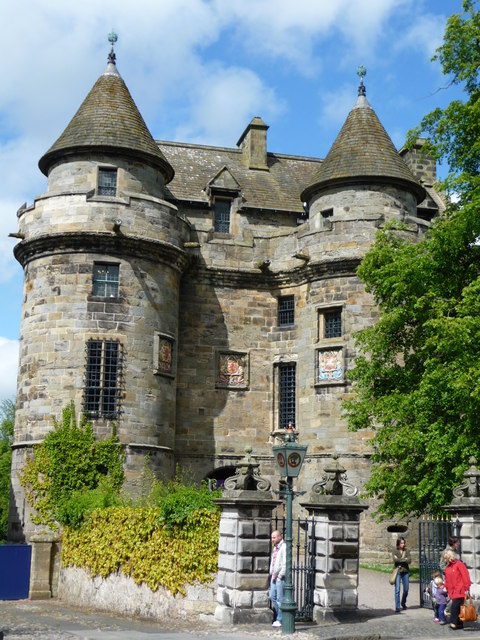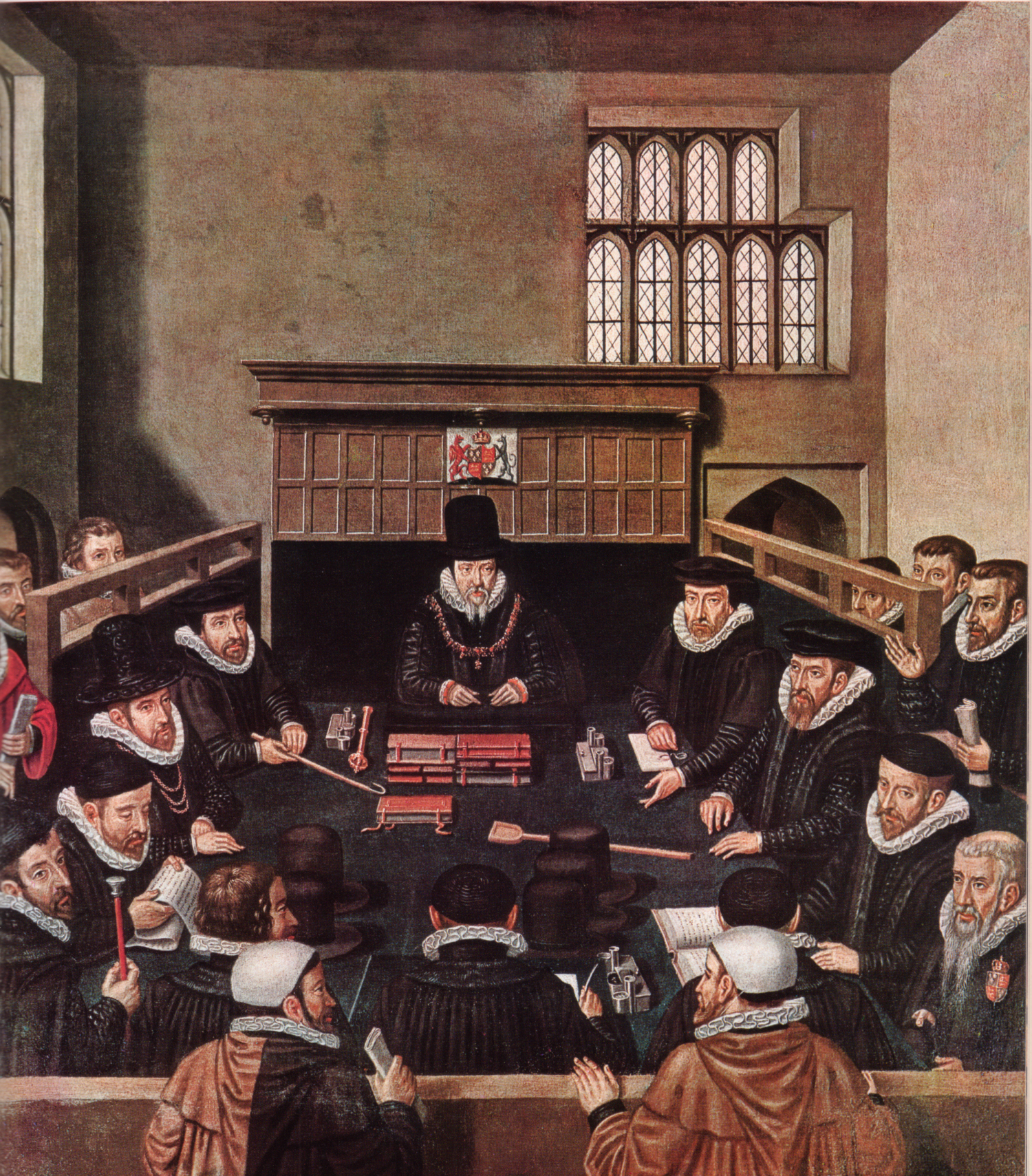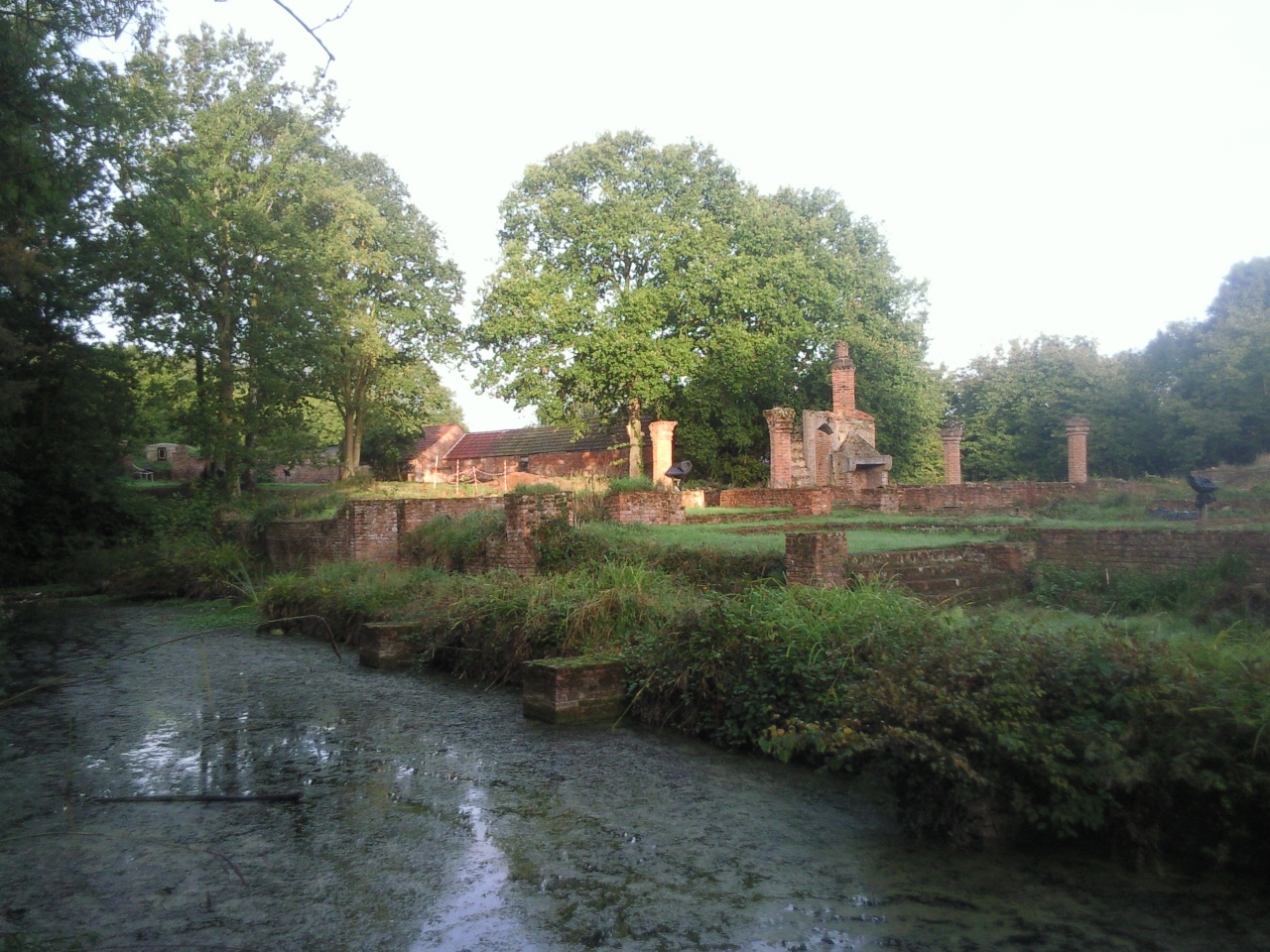|
Charles De Prunelé, Baron D'Esneval
Charles de Prunelé, Baron d'Esneval (died 1624) was a French diplomat and ambassador in Scotland in 1586. The Château d'Esneval is at Pavilly, Seine-Maritime. He is known by his title, as "D'Esneval", or "D'Aisneval", or "D'Anneval". Mission to Scotland D'Esneval seems to have gained prominence at the French court and an appointment as a diplomat following his marriage in 1583 to Madeleine Pinart, a daughter of the French Secretary of State, Claude Pinart. There were suggestions in August 1584 that he, or his brother-in-law, might go to Scotland as a diplomat. In 1586 he was sent to Scotland and welcomed by David Beaton of Melgund, a Master of Household to James VI. His wife, Madeleine Pinart, remained at the French court. Henry III of France and his mother Catherine de' Medici wrote to James VI in November 1585, introducing the new resident ambassador charged with promoting the Auld alliance. Henry III intended that D'Esneval would present a gold ring worth 500 ''Écu'' to ... [...More Info...] [...Related Items...] OR: [Wikipedia] [Google] [Baidu] |
Pavilly
Pavilly () is a commune in the Seine-Maritime department in the Normandy region in northern France. Geography A town of farming and light industry situated by the banks of the river Austreberthe in the Pays de Caux, some northwest of Rouen at the junction of the D4, D142, D22 and the D67 roads. Heraldry Population Places of interest * The church of Notre-Dame, dating from the thirteenth century. * The chapel of Sainte Austreberthe, all that remains of the thirteenth century priory that was founded by Philibert of Jumièges. * The fourteenth-century château Esneval, built on the foundations of a feudal castle. People * Saint Austrebertha, born at Thérouanne (Pas-de-Calais) in 633, died at Pavilly on 10 February 704. She was the first abbess at the convent of Pavilly. See also *Communes of the Seine-Maritime department The following is a list of the 707 communes of the French department of Seine-Maritime. The communes cooperate in the following intercommunaliti ... [...More Info...] [...Related Items...] OR: [Wikipedia] [Google] [Baidu] |
Guillaume De L'Aubespine De Châteauneuf
Guillaume de l'Aubespine de Châteauneuf (1547–1629) was a French diplomat in London between 1585 and 1589, involved in the affairs of Mary, Queen of Scots. He became the Marquis of Châteauneuf. Family background He was a son of Claude de l'Aubespine, baron de Châteauneuf and Jeanne Bochetel, a daughter of the diplomat Guillaume Bochetel. Her brother Jacques Bochetel de la Forest, had been a diplomat in London in the 1560s. London and Mary, Queen of Scots Châteauneuf succeeded Michel de Castelnau as ambassador in London in September 1585. He inherited packets of unsent ciphered letters for Mary. In February 1586, Châteauneuf complained to Francis Walsingham that his lodgings were small and had a bad smell, and made his daughter unwell. His wife was pregnant. He hoped that Walsingham would move him to an empty house belonging to Mary Sidney, Countess of Pembroke. Walsingham had kept spies in Castelnau's household and now determined to intercept Mary's correspondence arriving ... [...More Info...] [...Related Items...] OR: [Wikipedia] [Google] [Baidu] |
Thomas Randolph (ambassador)
Thomas Randolph (1523–1590) was an English ambassador serving Elizabeth I of England. Most of his professional life he spent in Scotland at the courts of Mary, Queen of Scots, and her son James VI. While in Scotland, he was embroiled in marriage projects and several upheavals. In 1568-1569 he was sent on a special embassy to Russia, visiting the court of Ivan the Terrible. Randolph was also a Member of Parliament: for New Romney in 1558, Maidstone 1584, 1586 and 1589, Grantham 1559 and St Ives 1558 and 1572. Exile in France Thomas Randolph was born in 1523, the son of Avery Randolph of Badlesmere, Kent and Anne Gainsford (NOT the lady-in-waiting to Anne Boleyn). He entered Christ Church, Oxford at the time of its foundation, and graduated B.A. in October 1545, and B.C.L. in 1548. Shortly afterwards he became a public notary; and in 1549 he was made principal of Broadgates Hall (now Pembroke College), Oxford. He continued there until 1553, when the Protestant persecutions un ... [...More Info...] [...Related Items...] OR: [Wikipedia] [Google] [Baidu] |
Robert Melville, 1st Lord Melville
Robert Melville, 1st Lord Melville (c. 1527–1621) was a Scottish diplomat, administrator, jurist, and intriguer, and uncle of the poet Elizabeth Melville. Family Known as Sir Robert Melville of Murdocairnie or Murdochcairnie, Robert was the second son of John Melville of Raith, Sir John Melville of Raith, Fife, Raith in Fife and Helen Napier of Merchiston. His younger brother Sir James Melville of Halhill wrote a famous political memoir. Another brother, Andrew Melville of Garvock, joined the household of Mary, Queen of Scots in Scotland. Robert married firstly; Katherine Adamson; secondly Mary Leslie, daughter of Andrew Leslie, 5th Earl of Rothes, Andrew Leslie, Earl of Rothes; thirdly, Jean Stewart, daughter of Robert Stewart, 1st Earl of Orkney, Robert Stewart, Earl of Orkney. He had a daughter Christiane and his son and heir with Katherine Adamson, Robert Melville, 2nd Lord Melville. Career During the Scottish Reformation, Robert Melville sided with the Protestant Lords of ... [...More Info...] [...Related Items...] OR: [Wikipedia] [Google] [Baidu] |
John Maitland, 1st Lord Maitland Of Thirlestane
John Maitland, 1st Lord Maitland of Thirlestane (1537 – 3 October 1595), of Lethington, Knight (1581), was Lord Chancellor of Scotland. Life He was the second son of Sir Richard Maitland of Thirlestane, Berwickshire, and Lethington, Haddingtonshire, who settled the lands of Thirlestane upon him, and thereafter sent him abroad for his education. Through the influence of his brother, William Maitland, upon John Maitland's return, he received the offer of the position of Commendator of Kelso Abbey, which he shortly afterwards exchanged with Francis Stewart, later Earl of Bothwell, for the Priory of Coldingham. This transaction was ratified by Mary, Queen of Scots on 20 April 1567. Upon the death of his father, he was appointed Keeper of the Privy Seal of Scotland, on 20 April 1567. He also supported Regent Moray and sat in his parliaments in December 1567 and August 1568. On 2 June 1568, he was created a Senator of the College of Justice as an Ordinary Lord on the spirit ... [...More Info...] [...Related Items...] OR: [Wikipedia] [Google] [Baidu] |
William Keith Of Delny
Sir William Keith of Delny (died 1599) was a Scottish courtier and Master of the Royal Wardrobe. He also served as ambassador for James VI to various countries. He was an important intermediary between George Keith, 5th Earl Marischal and the king, the king and courtiers, and the king and foreign governments. Career William Keith was a son of Andrew Keith, laird of Ravenscraig, Aberdeenshire, and distantly related to the Earls Marischal. In 1579, he was made a valet in the household of James VI of Scotland. In May 1583 he accompanied Colonel William Stewart and John Colville on an embassy to London to seek English support for the government of William Ruthven, 1st Earl of Gowrie. On 1 June he was attacked and insulted by Marmaduke Hedworth, Robert Banks, and others outside Durham on the way back. Hedworth declared Keith was a "Scottish villain" and he replied "I am a gentleman." Delny had sufficient influence to request that a namesake tailor, William Keith, be made a burgess ... [...More Info...] [...Related Items...] OR: [Wikipedia] [Google] [Baidu] |
Robert Dudley, 1st Earl Of Leicester
Robert Dudley, 1st Earl of Leicester (24 June 1532 – 4 September 1588) was an English statesman and the favourite of Elizabeth I from her accession until his death. He was a suitor for the queen's hand for many years. Dudley's youth was overshadowed by the downfall of his family in 1553 after his father, the Duke of Northumberland, had failed to prevent the accession of Mary I. Robert Dudley was condemned to death but was released in 1554 and took part in the Battle of St. Quentin under Mary's husband and co-ruler, Philip, which led to his full rehabilitation, but also to the death of his younger brother Henry. On Elizabeth I's accession in November 1558, Dudley was appointed Master of the Horse. In October 1562, he became a privy councillor and, in 1587, was appointed Lord Steward of the Royal Household. In 1564, Dudley became Earl of Leicester and, from 1563, one of the greatest landowners in North Wales and the English West Midlands by royal grants. The Earl of Leic ... [...More Info...] [...Related Items...] OR: [Wikipedia] [Google] [Baidu] |
William Cecil, 1st Baron Burghley
William Cecil, 1st Baron Burghley (13 September 15204 August 1598), was an English statesman, the chief adviser of Elizabeth I, Queen Elizabeth I for most of her reign, twice Secretary of State (England), Secretary of State (1550–1553 and 1558–1572) and Lord High Treasurer from 1572. In his description in the Encyclopædia Britannica Eleventh Edition, ''Encyclopædia Britannica'' Eleventh Edition, Albert Pollard, A.F. Pollard wrote, "From 1558 for forty years the biography of Cecil is almost indistinguishable from that of Elizabeth and from the history of England." Cecil set as the main goal of English policy the creation of a united and Protestant British Isles. His methods were to complete the control of Ireland, and to forge an alliance with Scotland. Protection from invasion required a powerful Royal Navy. While he was not fully successful, his successors agreed with his goals. In 1587, Cecil persuaded the Queen to order the Execution of Mary, Queen of Scots, executio ... [...More Info...] [...Related Items...] OR: [Wikipedia] [Google] [Baidu] |
Michel De Castelnau
Michel de Castelnau, Sieur de la Mauvissière ( 1520–1592) was a French soldier and diplomat, ambassador to Elizabeth I, Queen Elizabeth I. He wrote a memoir covering the period between 1559 and 1570. Life He was born in La Mauvissière (now part of Neuvy-le-Roi, Indre-et-Loire), Touraine about 1520. He was a son of Jean de Castelnau and Jeanne Dusmesnil, one of a family of nine children. His grandfather, Pierre de Castelnau, had been Master of the Horse, Equerry (Master of the Horse) to Louis XII of France, Louis XII. Endowed with a clear and penetrating intellect and remarkable strength of memory, he received a careful education, capped off with travels in Italy and a long stay at Rome. He then spent some time in Malta and afterwards entered the army. His first acquaintance with war was in the campaigns of the French in Italy. His abilities and his courage won him the friendship and protection of Charles, Cardinal of Lorraine, who took him into his service. In 1557 a command ... [...More Info...] [...Related Items...] OR: [Wikipedia] [Google] [Baidu] |
Francis Walsingham
Sir Francis Walsingham ( – 6 April 1590) was principal secretary to Queen Elizabeth I of England from 20 December 1573 until his death and is popularly remembered as her " spymaster". Born to a well-connected family of gentry, Walsingham attended Cambridge University and travelled in continental Europe before embarking on a career in law at the age of twenty. A committed Protestant, during the reign of the Catholic Queen Mary I of England he joined other expatriates in exile in Switzerland and northern Italy until Mary's death and the accession of her Protestant half-sister, Elizabeth. Walsingham rose from relative obscurity to become one of the small coterie who directed the Elizabethan state, overseeing foreign, domestic and religious policy. He served as English ambassador to France in the early 1570s and witnessed the St. Bartholomew's Day massacre. As principal secretary, he supported exploration, colonisation, the development of the navy, and the plantat ... [...More Info...] [...Related Items...] OR: [Wikipedia] [Google] [Baidu] |
Patrick Gray, 6th Lord Gray
Patrick Gray, 6th Lord Gray (died 1612), known most of his life as Patrick, Master of Gray, was a Scottish nobleman and politician during the reigns of Mary, Queen of Scots and James VI of Scotland. Early life Patrick Gray, the son of Patrick Gray, 5th Lord Gray, and of his wife Barbara (a daughter of William Ruthven, 2nd Lord Ruthven) grew up as a Protestant and attended the University of Glasgow. In 1575 he married Elizabeth Lyon, daughter of John Lyon, 8th Lord Glamis, a marriage that failed shortly afterwards. Patrick traveled to France, converted to Roman Catholicism and became a supporter of Mary, Queen of Scots (died 1587). Political life On his return to Scotland in 1583, Patrick gained notability as a political schemer and diplomat, endearing himself to the young King James whilst he plotted with James Stewart, Earl of Arran to keep Mary in prison and frustate Mary's plan for an " associated rule". In October 1584, Gray was appointed a Gentleman of the Privy Chamber ... [...More Info...] [...Related Items...] OR: [Wikipedia] [Google] [Baidu] |
Julian Goodare
Julian Goodare is a professor of history at University of Edinburgh. Academic career Goodare studied at the University of Edinburgh in the 1980s, afterwards engaged as a postdoctoral fellow. He lectured at the University of Wales, and at the University of Sheffield. He returned to work at Edinburgh in 1998. He was the co-director of the Survey of Scottish Witchcraft alongside Louise Yeoman. In 2019, he called for a memorial to Scotland's tortured and executed witches. Goodare has published articles and book chapters on crown finance in the early modern period. Subjects include the administration known as the Octavians, and the annual sums of money which Elizabeth I gave James VI of Scotland, which he argues ought to be known as the English subsidy. He explored the significance of the " Ainslie Bond", made in support of the Earl of Bothwell, in the light of Jenny Wormald Jennifer Wormald (18 January 1942 – 9 December 2015) was a Scottish historian who studied late medieva ... [...More Info...] [...Related Items...] OR: [Wikipedia] [Google] [Baidu] |





